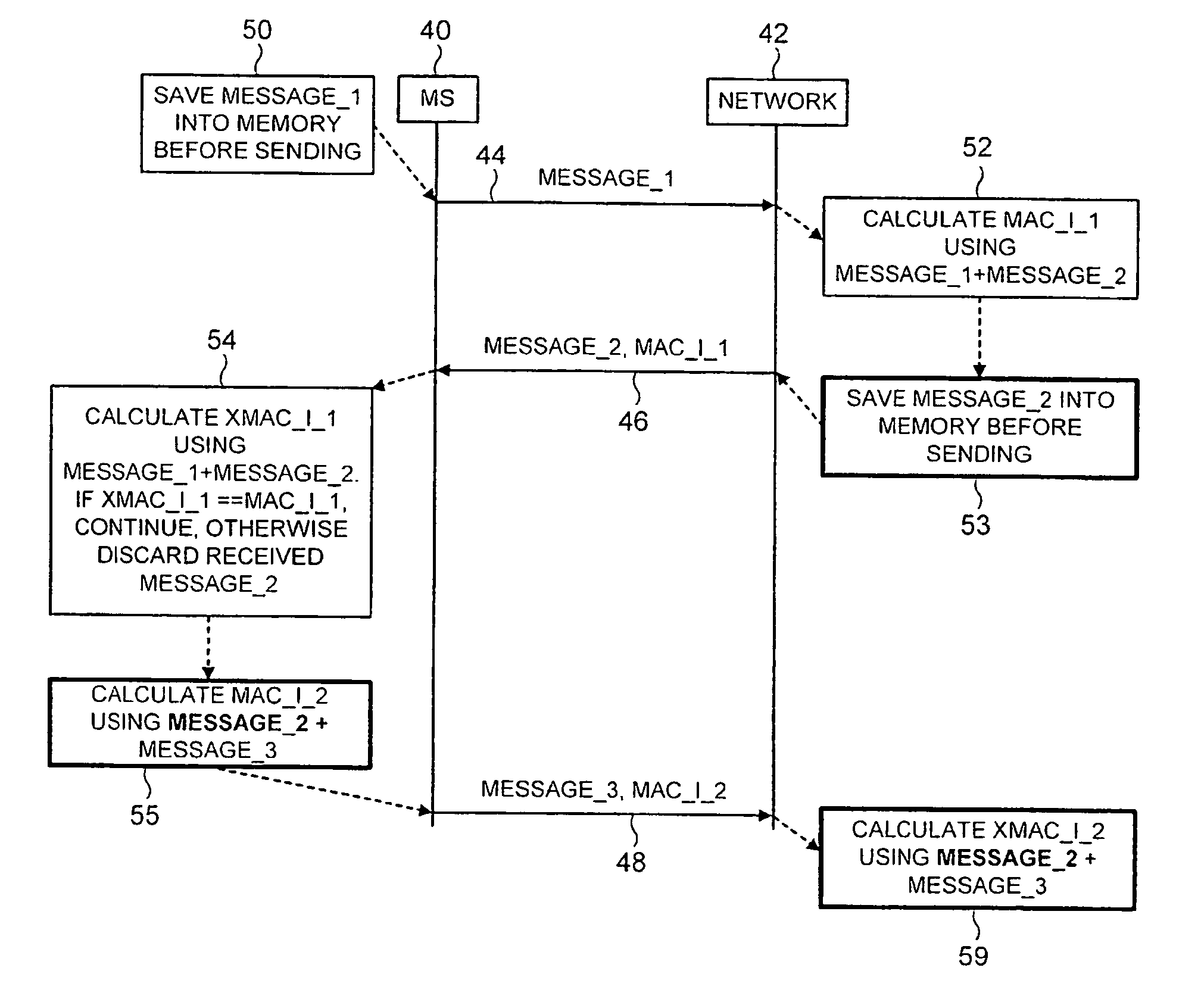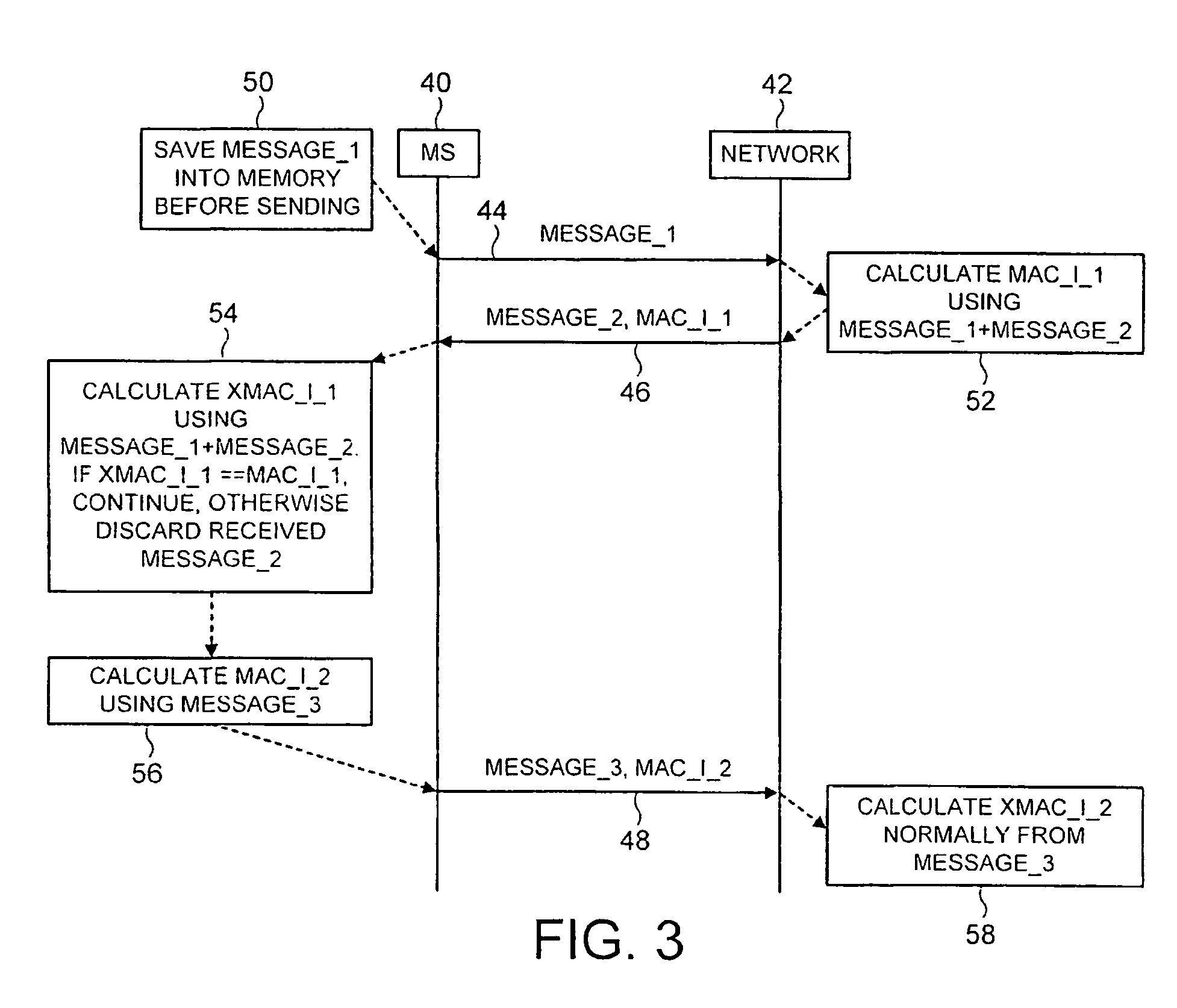Message authentication
- Summary
- Abstract
- Description
- Claims
- Application Information
AI Technical Summary
Benefits of technology
Problems solved by technology
Method used
Image
Examples
first embodiment
[0057] Referring to FIG. 3, the present invention is described. For the purpose of this illustrative example, it is assumed that messages are being exchanged between the mobile station 40 and a network 42. It is assumed that the mobile station 40 initiates the exchanged messages.
[0058] The mobile station 40 constructs a message for transmission in the normal way in accordance with standard procedures. Prior to transmitting the message, as indicated by step 50, the mobile station 40 stores the initial message, labeled message_1, in its memory. As indicated by arrow 44, message_1 is then transmitted from the mobile station 40 to network 42. In accordance with the present invention, the first message is sent without a message authentication code. The network 42 receives the first message from the mobile station, and prepares a second message, message_2, for transmission back to the mobile station 40. In addition, in a step 52 the network 42 calculates a first message authentication cod...
second embodiment
[0064] Referring to FIG. 4, the present invention is now described. Where appropriate, the same reference numerals as used in FIG. 3 are used to refer to identical steps or procedures. The embodiment of the invention described with reference to FIG. 4 is suitable for signaling procedures normally having either two or three messages.
[0065] As in the embodiment described hereinabove with reference to FIG. 3, the mobile station 40 prepares a first message message_1 for transmission to the network 42, and prior to transmitting it, as represented by arrow 44, stores it in a memory as represented by step 50. In step 52, the network 42 calculates a first message authentication code MAC_I_1 using both the first message and the second message. In an additional step 53, the network 42 saves the second message message_2 into its memory before transmission. As in the embodiment of FIG. 3, the network 42 transmits the second message message_2 together with the first message authentication code M...
third embodiment
[0072] In the present invention, the message authentication code transmitted with the third message is calculated over all three messages, ie message_1, message_2 and message_3. The advantage of this embodiment is that each check sum protects the maximum amount of the data communicated in the procedure. Thus, this variation excludes the possibility of an attack where a “man in the middle” replaces the first message with another one and modifies the message authentication code in the second message accordingly. Such an attack could only be successful if the attacker is able to modify the check sum correctly. There are two possible ways to do this: 1) the replay of an earlier message authentication code; or 2) pure guessing.
[0073] The first way is only possible if the counter number repeats, which means the same integrity key has been in use for too long. The possibility of the second way being successful is a very low probability. However, if the message authentication code of the se...
PUM
 Login to View More
Login to View More Abstract
Description
Claims
Application Information
 Login to View More
Login to View More - R&D
- Intellectual Property
- Life Sciences
- Materials
- Tech Scout
- Unparalleled Data Quality
- Higher Quality Content
- 60% Fewer Hallucinations
Browse by: Latest US Patents, China's latest patents, Technical Efficacy Thesaurus, Application Domain, Technology Topic, Popular Technical Reports.
© 2025 PatSnap. All rights reserved.Legal|Privacy policy|Modern Slavery Act Transparency Statement|Sitemap|About US| Contact US: help@patsnap.com



